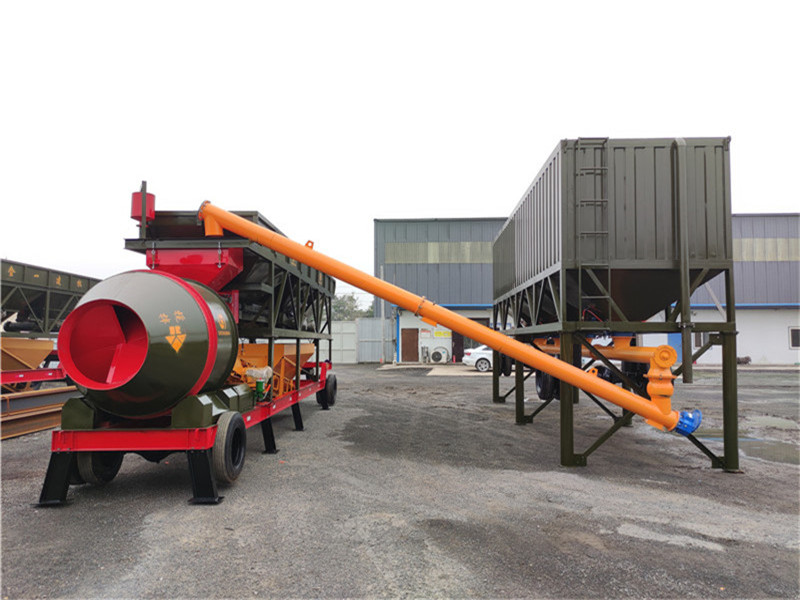Concrete Batch Plants: A Complete Guide for Construction Professionals
Introduction: The Backbone of Modern Construction
Concrete remains one of the most widely used materials in modern construction — from towering skyscrapers and bridges to highways and residential foundations. But producing concrete with consistent quality and volume requires advanced technology and precision control.
That’s where Concrete Batch Plants (also known as Concrete Batching Plants) come in. These facilities play a vital role in mixing and preparing the materials that form the basis of every major infrastructure project. Understanding how these plants work, their types, and their core components helps contractors make smarter investment and project decisions.
What Is a Concrete Batch Plant?
A Concrete Batch Plant is an industrial facility that combines cement, water, sand, aggregates, and sometimes chemical additives to produce ready-mix concrete. Unlike manual mixing methods, batch plants operate with high precision through computer-controlled systems, ensuring each batch meets the required specifications.
Depending on project needs and mobility requirements, concrete batch plants come in two main configurations:
Stationary Concrete Batching Plants – Built for long-term, large-scale projects that require continuous production.
Mobile (Portable) Concrete Batching Plants – Designed for temporary or remote construction sites where quick setup and mobility are essential.
Each type plays a unique role in optimizing efficiency, minimizing costs, and maintaining concrete quality.

How Does a Concrete Batch Plant Work?
The batching process involves multiple carefully controlled stages:
Material Storage – Aggregates (sand, gravel, crushed stone) are stored in separate hoppers, while cement is kept dry in sealed silos.
Weighing and Proportioning – Each material is accurately weighed according to the concrete mix design.
Mixing Process – Materials are transferred into the mixer, where they are thoroughly blended into a homogenous mixture.
Discharge and Transport – The finished concrete is then discharged into mixer trucks for delivery to the construction site.
Modern plants use automated control systems to monitor these steps, ensuring precision, efficiency, and consistency in every batch.
Dry Batch vs. Wet Batch Plants
The two primary methods of batching concrete are dry batching and wet batching:
Dry Batch Plants
Mix cement, sand, and aggregates in a dry state before water is added during transit.
Water is introduced in the mixer truck, allowing flexibility in adjusting the mix’s water-cement ratio on-site.
Ideal for projects needing precise water control or where transportation time varies.
Wet Batch Plants
Combine all ingredients, including water, at the plant itself.
Produce a fully mixed, uniform, and ready-to-use concrete mixture.
Well-suited for large commercial or industrial projects that demand high consistency and fast delivery.
Both types have distinct advantages, and the best choice depends on your project’s scale, mobility, and timeline.
Stationary vs. Mobile Batch Plants
Stationary Concrete Batch Plants
These permanent facilities are built for long-term concrete production. They are perfect for large infrastructure projects, such as bridges, dams, highways, and industrial complexes, where continuous output and precision are critical.
Advantages include:
Higher capacity and efficiency
Advanced automation and customization options
Cost-effectiveness in long-term use
However, they require significant initial setup, space, and foundation preparation.
Mobile (Portable) Concrete Batch Plants
For contractors handling multiple or remote projects, mobile plants provide unmatched flexibility. They can be assembled, operated, and relocated quickly, reducing downtime between jobs.
Advantages include:
Quick setup and dismantling
Lower installation costs
Ideal for short-term or remote construction sites
Key Components of a Concrete Batching Plant
A high-quality concrete batch plant comprises several major components that work together to ensure smooth, efficient operation:
Aggregate Bins: Store and separate sand, gravel, and crushed stone.
Cement Silos: Keep cement dry and ready for batching.
Conveyors: Transport materials from storage to the mixer.
Weighing Systems: Measure materials precisely for consistent concrete quality.
Mixers: Blend materials into a uniform mixture — available as twin-shaft, planetary, or drum mixers.
Control System: A computer or PLC system that automates the batching process and monitors performance.
Water and Additive Systems: Inject controlled amounts of water and chemical admixtures to achieve the desired concrete properties.
Each component plays a critical role in ensuring consistent quality, reducing waste, and maximizing plant efficiency.
Advantages of Using Concrete Batch Plants
Investing in a concrete batching plant provides numerous operational and financial advantages:
Consistency: Automated mixing ensures the same quality across every batch.
Efficiency: Speeds up production and minimizes manual labor.
Cost Savings: Reduces reliance on external ready-mix suppliers and transportation costs.
Customization: Adjust mix ratios for different applications or environmental conditions.
Sustainability: Modern plants feature dust collection, recycling systems, and energy-efficient designs to meet environmental standards.
With proper operation and maintenance, batching plants can serve as a long-term asset, improving both productivity and profitability.
Applications Across Industries
Concrete batch plants are essential across a wide range of construction sectors, including:
Residential & Commercial Buildings: Reliable concrete supply for foundations, slabs, and structures.
Infrastructure Projects: Roads, bridges, tunnels, and airports requiring large-scale, consistent concrete output.
Industrial Facilities: Warehouses, plants, and logistics hubs demanding high-strength concrete with precision control.
Their adaptability makes them a cornerstone of modern building and civil engineering operations.
Choosing the Right Batch Plant for Your Needs
Before purchasing or installing a concrete batch plant, consider the following factors:
Project Scale and Volume Requirements
Mobility Needs (Fixed vs. Portable)
Environmental Regulations and Local Standards
Available Space and Logistics
Power Supply and Infrastructure
Desired Level of Automation
Henan Shengmao Machinery offers professional guidance to help clients select the right batching system tailored to their project requirements.
The Future of Concrete Batching Technology
The future of batching plants lies in automation, digitization, and sustainability. With smart control systems, remote monitoring, and AI-based maintenance predictions, tomorrow’s plants will achieve even greater accuracy and energy efficiency.
Eco-friendly solutions — such as recycled aggregates, water recovery systems, and low-emission designs — are also becoming standard, helping contractors meet stricter green construction standards.
Why Choose Henan Shengmao Machinery Co., Ltd.
Founded in 2001 and located in Zhengzhou City, China’s hub for construction machinery manufacturing, Henan Shengmao Machinery Co., Ltd. has grown into a trusted global supplier of concrete batching plants and construction equipment.
With a strong supply chain, skilled workforce, and decades of industry experience, we provide:
Durable and cost-effective concrete batching plants
Customized solutions for different project needs
On-site installation and technical support
Long-term after-sales service
Our mission is to empower global contractors with efficient, reliable, and innovative machinery that enhances construction performance.
Final Thoughts
Concrete batch plants are more than just machines — they are the foundation of modern construction productivity. Whether stationary or mobile, dry or wet, a high-quality batching plant ensures that every cubic meter of concrete meets the highest standards of strength and reliability.
If you’re ready to upgrade your construction capacity, explore Henan Shengmao Machinery’s range of Concrete Batching Plants and Parts today.
Our expert engineers will help you design a solution that perfectly fits your project needs — ensuring precision, durability, and long-term performance.














